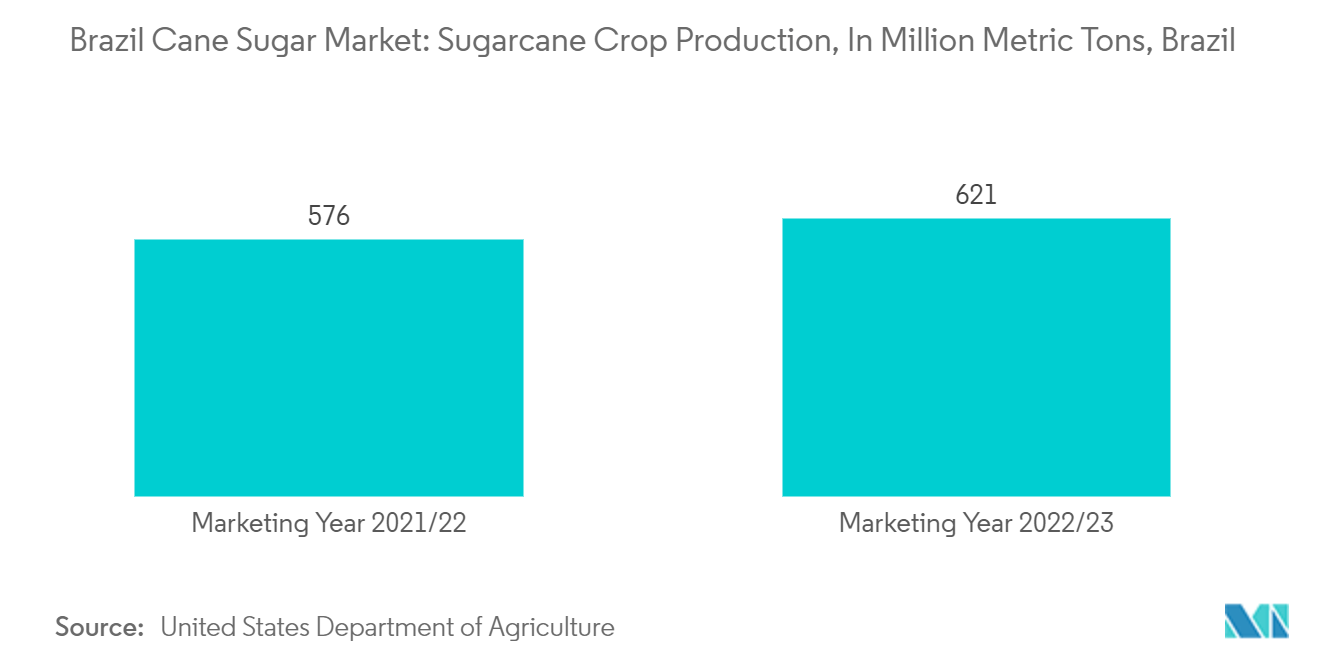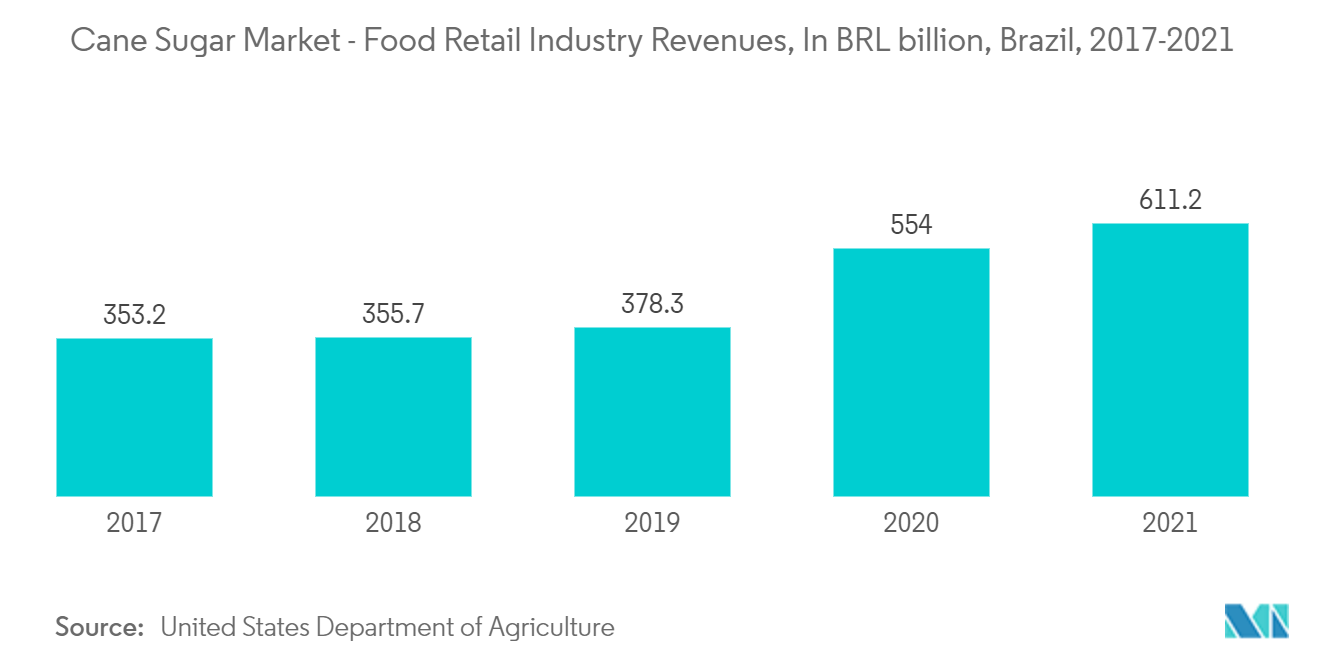Market Trends of Brazil Cane Sugar Industry
This section covers the major market trends shaping the Brazil Cane Sugar Market according to our research experts:
Large Production Base in the Country Supporting Demand Growth
- As per the Organisation for Economic Cooperation and Development (OECD), Brazil is the world's largest sugar producer and is the main sugar exporter. The weak currency of Brazil favors a good level of sugar exports in Brazil. Also, sugarcane-based ethanol production is highly profitable in Brazil owing to low crude oil prices. Furthermore, the production of molasses, thick juice, or residue from milling cane is used for energy supply in the country.
- According to UNICA (Portuguese: União da Indústria de Cana-de-Açúcar), the Brazilian Sugarcane Industry Association, Brazil produces six types of cane sugar products which include varieties such as raw sugar, refined icumsa 45, white crystal, organic sugar, VHP very high polarization (VHP) sugar and VVHP sugar (Very Very High Polarization). Further, In response to the technological revolution in sugarcane production, the RenovAço Project encouraged professional training for workers in six of the State of So Paulo's main sugarcane-producing regions.
- The project was a collaboration between UNICA, the Federation of Salaried Rural Employees of the State of So Paulo (FERASEP), Solidaridad Foundation, and businesses involved in the production chain Syngenta, Case IH, Iveco, and FMC. The IDB (Inter-American Development Bank) provided financial support for the project.
- According to Sugarcane.org, Brazil produces and exports the most sugar (41.5 million tonnes), with 32,13 million tonnes going overseas in the 2020-2021 period. This represents 49% of global exports and 23% of global production. Over the past few years, sugarcane cultivation has been key to improving the country's local economy.
- As per the Organisation for Economic Cooperation and Development (OECD), Brazil is likely to remain the prime producer of sugarcane and produce 36% of the world's sugarcane by 2030. Over the last 35 years, the sugarcane sector of the country has grown tremendously, owing to outstanding technological progress enabled by new varieties, fertilizers, chemicals, mechanization, and different cropping practices. The growing demand from various application areas worldwide is anticipated to support the country's sugar production and consumption.

Food and Beverage Industry is the Major Application Area in the Country
- Cane sugar has multiple applications across different industries of food and beverage, pharmaceuticals, industrial, and other potential applications. Brazil's food and beverage industry is the country's primary application of cane sugar. The beverage industry of Brazil shows signs of recovery from the pandemic and offers a greater level of optimism, thus leading to increased use of cane sugar.
- Cane sugar is used at home, at bakeries, as syrups in bread making, as liquid sugar in confectionery items, etc. It is also used in baked custards and other desserts to produce desirable flavor-characterizing cooked foods such as cookies, bread, dumplings, etc. Therefore, the augmented consumption of beverages supports the market demand in Brazil and paves the way for opportunities for cane sugar manufacturers operating in the country.
- Cane sugar, available in various forms, has wide applications in food industries, including baking and confectionery. Icing sugar is made from powdered sugar. Sugar syrups are added to drinks or serve as the foundation for fruit toppings, sauces, and flavored syrups. Additionally, sugars mask acidic and bitter flavors, such as tomato sauces, mayonnaise, and pharmaceutical syrups. Sugars greatly influence foods' bulk (volume) and texture (mouthfeel). For instance, sugars contribute to the cakes and cookies volume. The jelly texture of jams results from the mixture of sugar and a gelling ingredient (like pectin).
- Sugar traps air bubbles and raises the temperature at which starch gelatinizes in baked products, giving cakes a light texture. Sugars are also the foundation for yeast fermentation (e.g., in rising bread). Sugar has humectant properties (it binds water), which are crucial for food preservation and have an impact on texture. Additionally, sugars lower the freezing point, essential for making softer ice cream, and raise the boiling issue, which is necessary for making sweets. Brazil has significant demand for bakery and confectionery products, driving the market further.

